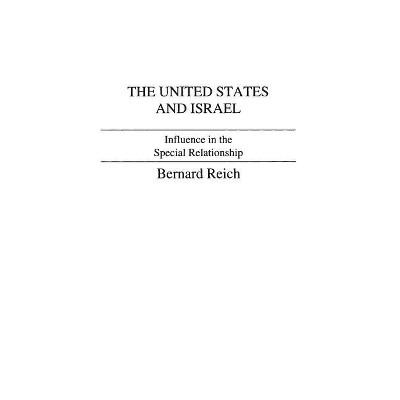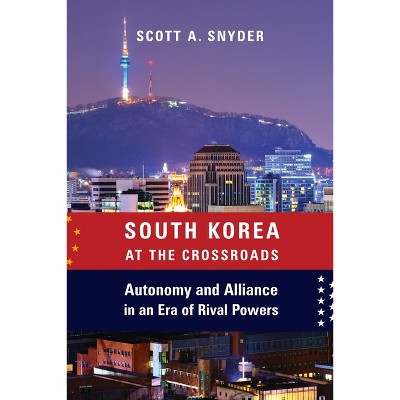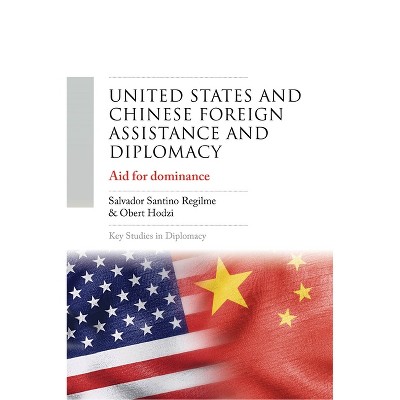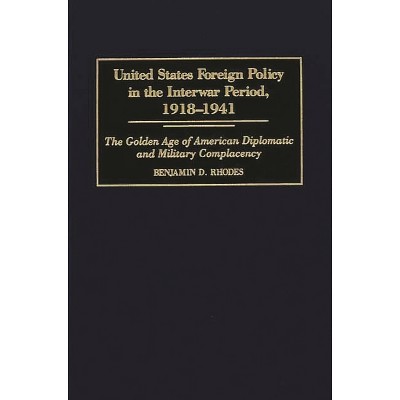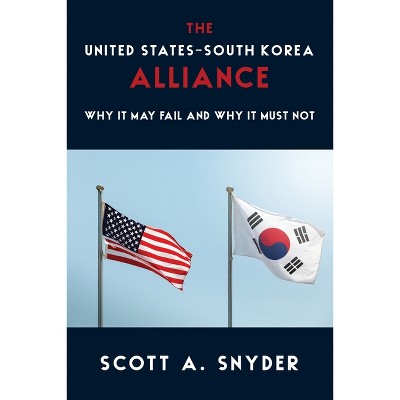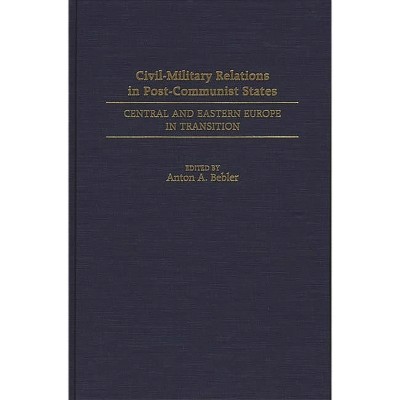Revolutionary States, Leaders, and Foreign Relations - by Houman Sadri (Hardcover)

About this item
Highlights
- This book compares and contrasts the foreign relations strategies of China, Cuba, and Iran in the first decade of their post-revolutionary periods.
- About the Author: HOUMAN A. SADRI is Assistant Professor of International Relations at the University of Central Florida in Orlando.
- 168 Pages
- Political Science, International Relations
Description
About the Book
This book compares and contrasts the foreign relations strategies of China, Cuba, and Iran in the first decade of their post-revolutionary periods. Among a variety of explanatory variables, leadership, particularly the type of revolutionary leaders, played a significant role in explaining the outcome of the policymaking process in each case. Three distinct patterns of foreign relations strategies are evident among all three revolutionary regimes in the ten-year period: Two-Track, Conflictual, and Conciliatory. This book is a valuable source for both experts and non-experts alike in providing insight into the foreign relations of revolutionary regimes in developing countries and in helping U.S. policymakers anticipate behaviors of future revolutionary leaders.
A focal point of this book is the examination of the nonalignment strategies of these prominent developing countries during the infancy of their regimes. Each state's particular strategy is described and explained in detail and then contrasted and compared. Although there are differences among their foreign policies, considering their geographic locations, size, wealth, military capabilities, leadership characteristics, and political institutions, there are significant similarities regarding their foreign policy goals and trends in their foreign relations with the Great Powers. Among explanatory factors, leadership played a significant role in the policy making process, although the foreign relations strategies of these revolutionary regimes were fed by a combination of national and international variables. In all three states, the tone of foreign policy was set by revolutionary leaders who were either idealists or realists. Idealists tended to take a more active and conflictual approach toward one or both of the superpowers, while Realists were more cautious and less willing to resort to a conflictual posture.
This book also investigates the gap between the theoretical and practical nonalignment stance of each state. This cross-regional study provides policy analysts with clues about the foreign policies of other revolutionary developing countries in similar situations. Finally, it makes suggestions about how a Great Power may relate to a developing country during its first post-revolution decade.
Book Synopsis
This book compares and contrasts the foreign relations strategies of China, Cuba, and Iran in the first decade of their post-revolutionary periods. Among a variety of explanatory variables, leadership, particularly the type of revolutionary leaders, played a significant role in explaining the outcome of the policymaking process in each case. Three distinct patterns of foreign relations strategies are evident among all three revolutionary regimes in the ten-year period: Two-Track, Conflictual, and Conciliatory. This book is a valuable source for both experts and non-experts alike in providing insight into the foreign relations of revolutionary regimes in developing countries and in helping U.S. policymakers anticipate behaviors of future revolutionary leaders.
A focal point of this book is the examination of the nonalignment strategies of these prominent developing countries during the infancy of their regimes. Each state's particular strategy is described and explained in detail and then contrasted and compared. Although there are differences among their foreign policies, considering their geographic locations, size, wealth, military capabilities, leadership characteristics, and political institutions, there are significant similarities regarding their foreign policy goals and trends in their foreign relations with the Great Powers. Among explanatory factors, leadership played a significant role in the policy making process, although the foreign relations strategies of these revolutionary regimes were fed by a combination of national and international variables. In all three states, the tone of foreign policy was set by revolutionary leaders who were either idealists or realists. Idealists tended to take a more active and conflictual approach toward one or both of the superpowers, while Realists were more cautious and less willing to resort to a conflictual posture. This book also investigates the gap between the theoretical and practical nonalignment stance of each state. This cross-regional study provides policy analysts with clues about the foreign policies of other revolutionary developing countries in similar situations. Finally, it makes suggestions about how a Great Power may relate to a developing country during its first post-revolution decade.Review Quotes
?[T]his is a valuable topic study....[O]ffers useful brief case studies of how foreign policy is made and of international responses under conditions of great uncertainty. [It] makes more clear how and why revolutions provoke conflict across, as well as within, national boundaries.?-American Political Science Review
?A solid piece of research, Sadri's book compares the forieg policies of the revolutionary regimes of China, Cuba, and Iran during the first ten years of their respective revolutions. The book is well organized and very well documented... The analysis is built around the concept of leadership--revolutionary idealists, revolutionary realists, and nonalignment--a concept that is thoroughly discussed.?-Choice
?Houman A. Sadri's book...deals sensibly ...with the problems of how domestic revolution relates to international change. The main strengths of the book lie in the author's ability to draw useful comparisons between the background and personalities of individual revolutionary leaders and his jargon-free discussion of earlier theoretical and historical contributions to the field.?-The International History Review
"ÝT¨his is a valuable topic study....ÝO¨ffers useful brief case studies of how foreign policy is made and of international responses under conditions of great uncertainty. ÝIt¨ makes more clear how and why revolutions provoke conflict across, as well as within, national boundaries."-American Political Science Review
"[T]his is a valuable topic study....[O]ffers useful brief case studies of how foreign policy is made and of international responses under conditions of great uncertainty. [It] makes more clear how and why revolutions provoke conflict across, as well as within, national boundaries."-American Political Science Review
"A solid piece of research, Sadri's book compares the forieg policies of the revolutionary regimes of China, Cuba, and Iran during the first ten years of their respective revolutions. The book is well organized and very well documented... The analysis is built around the concept of leadership--revolutionary idealists, revolutionary realists, and nonalignment--a concept that is thoroughly discussed."-Choice
"Houman A. Sadri's book...deals sensibly ...with the problems of how domestic revolution relates to international change. The main strengths of the book lie in the author's ability to draw useful comparisons between the background and personalities of individual revolutionary leaders and his jargon-free discussion of earlier theoretical and historical contributions to the field."-The International History Review
About the Author
HOUMAN A. SADRI is Assistant Professor of International Relations at the University of Central Florida in Orlando./e Previously, he taught at the University of Richmond in Virginia.Shipping details
Return details
Trending Non-Fiction






